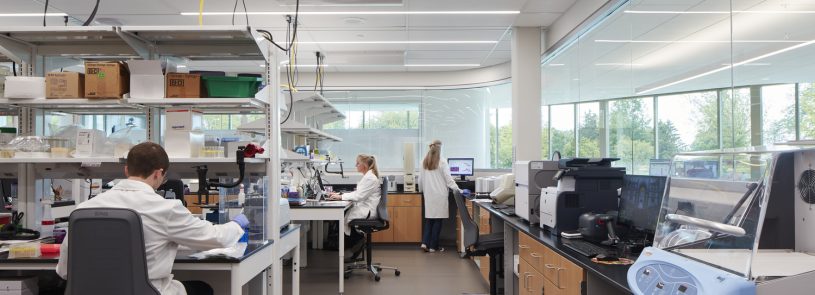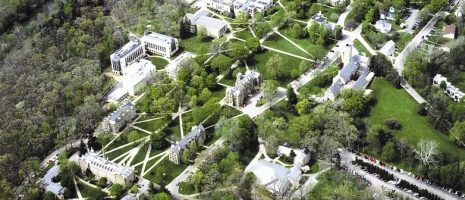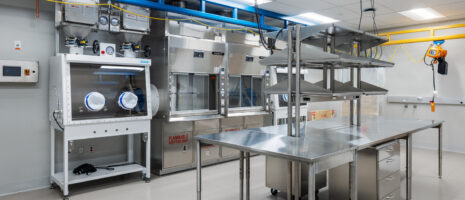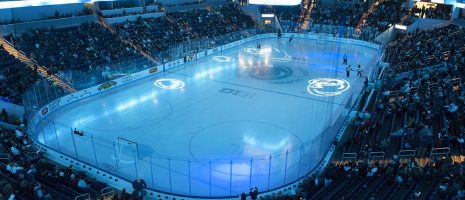Connection to the outdoors is a natural fit for the R&D facility user experience (Podcast included)

By Mike Lawless
IMEG has collaborated with Christner Architects on two innovative, award-winning plant research and development facilities—the William H. Danforth addition at the Donald Danforth Plant Science Center in St. Louis and the recently completed Ball Helix Central Research & Development Center in West Chicago, IL.
 The state-of-the-art Danforth lab provides an optimum environment for the plants and the research, which strives to enhance the nutritional content of plants and increase agricultural production to create a sustainable food supply. The Ball Helix Center (pictured above and at left) transforms the research culture and the scientific capabilities of Ball Horticultural Company, the world’s largest ornamental seed producer. An overarching goal on both projects was to understand the scientists’ work and needs and design the architecture and infrastructure to create an environment that would help them be successful.
The state-of-the-art Danforth lab provides an optimum environment for the plants and the research, which strives to enhance the nutritional content of plants and increase agricultural production to create a sustainable food supply. The Ball Helix Center (pictured above and at left) transforms the research culture and the scientific capabilities of Ball Horticultural Company, the world’s largest ornamental seed producer. An overarching goal on both projects was to understand the scientists’ work and needs and design the architecture and infrastructure to create an environment that would help them be successful.
In both instances, our team produced facilities—somewhat intuitively—in which the built environment plays a huge role in optimizing the user/researcher experience. This includes providing not only comfort, improved workflow, flexibility, and aesthetics, but also a visual connection with nature.
Incorporating the natural environment with the built environment is nothing new and is the subject of much research. However, we’ve seen up close the particular benefit this has had on these two projects. Jeff Ryan of Christner Architects and I talked about this during a recent IMEG podcast about the Ball Helix Center, whose demonstration garden provides a great example of the transformative influence nature can have on plant research labs.
“There’s potential to really dig into the research and use it as a tool in designing labs as we go forward,” Jeff says. “Not just for plant science, but for other kinds of research space that can connect to the outdoors, whether it’s literally seeing a garden or it’s just great daylight or it’s a connection to the sky. All this can improve how people communicate with each other, how they feel about going to work, and how creative they are.”
To learn more about the research/nature connection and the Ball Helix project, listen to our podcast (below) or read the Christner Architects project story and the IMEG case study.












